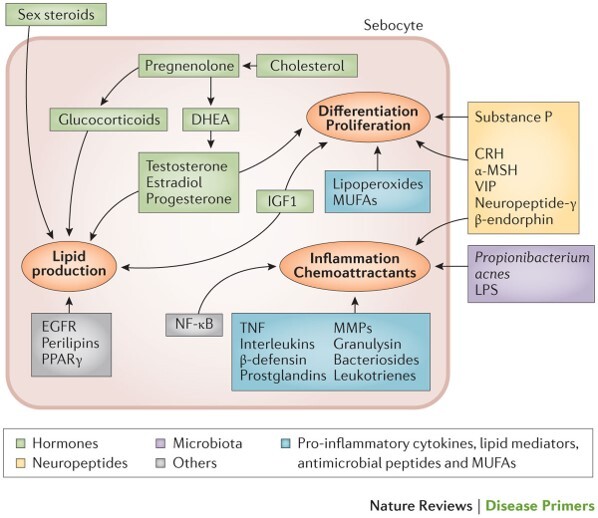Figure 2.

Pathophysiological processes involved in acne vulgaris. The pathogenesis of acne involves several processes including sebum production, and sebocytes differentiation, proliferation, and inflammation. These processes are regulated by circulating sex hormone levels as well as locally synthesized hormones, neuropeptides, the microbiota and pro-inflammatory cytokines, lipid mediators, antimicrobial peptides, and monounsaturated fatty acids (MUFAs). α-MSH, alpha-melanocyte-stimulating hormone; CRH, corticotropin-releasing hormone; DHEA, dehydroepiandrosterone; EGFR, epidermal growth factor receptors; IGF-1, insulin-like growth factor 1; LPS, lipopolysaccharide; MMP, matrix metalloproteinase; NF-κB, nuclear factor-κB; PPARγ, peroxisome proliferator-activated receptor-γ; TNF, tumor necrosis factor; VIP, vascular intestinal polypeptide. (Reproduced with permission from: Moradi Tuchayi S et al. [4])
